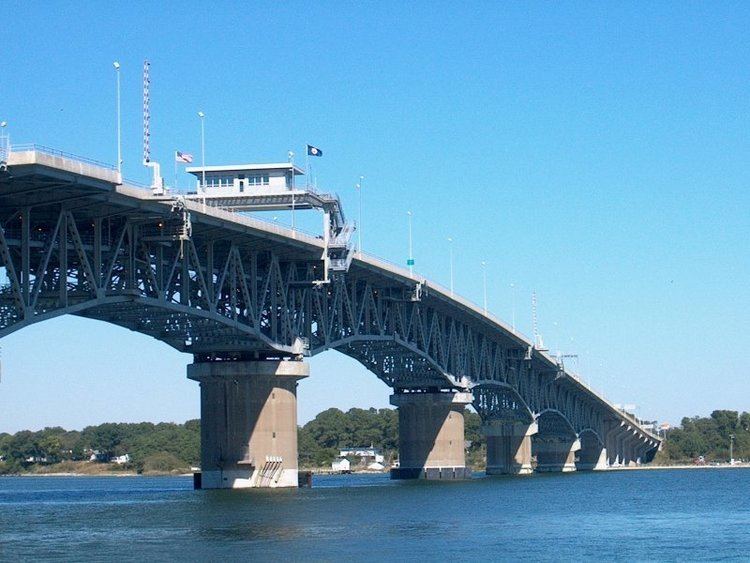Carries 4 lanes of US 17 ID number 000000000019824 [1] Total length 1,143 m | Opened 7 May 1952 Clearance below 18 m | |
 | ||
Similar James River Bridge, Yorktown Beach, Hampton Roads Bridge–Tunnel, Swing bridge, Monitor–Merrimac Memorial Bridge–Tunnel | ||
The George P. Coleman Memorial Bridge (known locally as simply the Coleman Bridge) is a double swing bridge that spans the York River between Yorktown and Gloucester Point, in the United States state of Virginia. It connects the Peninsula and Middle Peninsula regions of Tidewater, Virginia. The bridge is the only public crossing of the York River, though State Route 33 crosses both of its tributaries (the Mattaponi and Pamunkey Rivers) at just above its source at West Point.
History
Originally built in 1952, it was reconstructed and widened in 1995 through an unusual process which greatly reduced the time the important commuter artery was out-of-service from conventional methods. The current 3,750-foot (1,140 m)-long double-swing-span bridge carries United States Route 17, a four-lane arterial highway. The movable span is needed to allow ship access to several military installations that are upstream of the bridge, most notably, the United States Navy's Naval Weapons Station Yorktown. The roadways are almost 90 feet (27 m) above the river at the highest point of the bridge. The bridge is the largest double-swing-span bridge in the United States, and second largest in the world.
The toll bridge was named for George P. Coleman, who from 1913 to 1922 was the head of the Virginia Department of Highways and Transportation, predecessor to the Virginia Department of Transportation (VDOT). The bridge has been one of the sites of a special program to establish and encourage nesting locations for the peregrine falcon population of Virginia.
The George P. Coleman Memorial Bridge is a toll facility. Tolls are only collected northbound, and are used to pay for the expansion of the bridge to four lanes. Toll Collection Rates are as follows:
Bicycles taking advantage of the free crossing must use the established bicycle lane located to the right of the far right travel lane.
